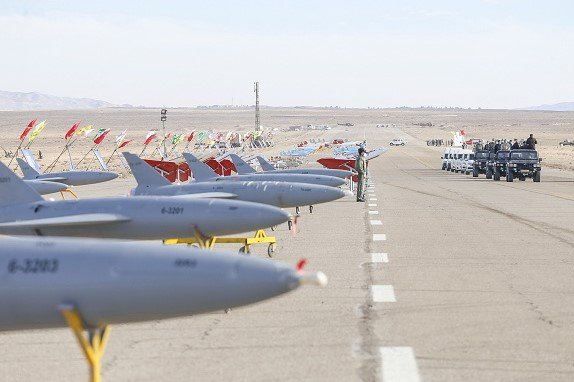US and Saudi Arabian forces wrapped up the largest counter-drone exercise in the Middle East on September 14, 2025, testing 20 advanced systems against growing aerial threats. Held at the Shamal-2 range in northeastern Saudi Arabia, the Red Sands 2025 drills involved over 300 personnel and focused on real-time detection, tracking, and destruction of drones amid rising regional conflicts.
Rising Drone Threats Drive Joint Response
Drone attacks have surged in the Middle East over the past few years, pushing nations to strengthen defenses. Groups backed by Iran, such as Yemen’s Houthis, have launched waves of explosive drones targeting oil facilities and military bases in Saudi Arabia and beyond.
This trend highlights a shift in warfare, where cheap, easy-to-build drones can overwhelm traditional air defenses. The 2019 strike on Saudi Aramco oil sites disrupted global energy supplies and exposed vulnerabilities. More recent incidents, including Houthi drone assaults on Red Sea shipping in 2024, have escalated tensions and prompted urgent action from allies like the US.
Experts note that these threats now include swarms of drones flying at low altitudes, making them hard to spot and stop. The Red Sands exercise directly tackles this by simulating real combat scenarios.

Inside the Red Sands 2025 Exercise
The 10-day event, running from September 7 to 14, brought together US Army units and Saudi forces for live-fire training. Participants tested integrated systems that combine radar, sensors, and weapons to counter unmanned aerial vehicles.
Key activities included ground-based defenses against drone swarms and air support from helicopters and jets. The drills emphasized quick response times, with teams practicing in both open deserts and simulated urban areas.
One highlight was the use of networked command systems that allowed seamless sharing of threat data between US and Saudi operators. This setup improved accuracy in identifying and neutralizing targets under pressure.
Advanced Systems Put to the Test
Twenty cutting-edge counter-drone platforms took center stage, showcasing a mix of detection and defeat tools. These included radar systems for early warning, electronic jammers to disrupt drone signals, and kinetic weapons for direct hits.
Among the standout technologies were mobile units that can be deployed on vehicles for flexible protection. The exercise also featured acoustic sensors that pick up drone sounds in noisy environments.
Here is a summary of some key systems tested:
| System Name | Type | Primary Function |
|---|---|---|
| MLIDS | Mobile Integrated | Detects and defeats small drones with radar and jamming |
| Vanguard | Scalable Launcher | Engages multiple drone swarms simultaneously |
| Shikra | Short-Range Radar | Tracks low-flying threats in real time |
| Skyguard | Electro-Optical | Provides visual identification and targeting |
| Signal Hunter | Passive RF Sensor | Locates drones without emitting signals |
These tools were evaluated for their ability to handle complex attacks, including those involving up to 50 drones at once.
The results showed strong performance in layered defenses, where outer sensors feed data to inner weapons for efficient takedowns.
Implications for Regional Security
The success of Red Sands 2025 strengthens US-Saudi ties and sets a model for other nations facing similar dangers. With drone technology spreading to non-state groups, this cooperation could help stabilize volatile areas like the Gulf.
Analysts predict that insights from the drills will influence future defense strategies, including upgrades to existing air shields. For instance, integrating these systems could protect critical infrastructure from surprise raids.
This exercise also aligns with broader efforts, such as recent US deployments of anti-drone tech in Iraq and Syria amid ongoing conflicts.
Looking Ahead to Future Collaborations
Building on past iterations, Red Sands 2025 marks the third major joint effort, with each one growing in scale and complexity. Officials from both countries expressed plans for more frequent training to stay ahead of evolving threats.
Industry partners contributed prototypes, hinting at rapid advancements in counter-drone tech. As global drone use expands, exercises like this could expand to include allies like the UAE or Jordan.
Share your thoughts on how these drills might change Middle East security. Did this article help you understand the drone threat better? Comment below and pass it along to others interested in defense news.
